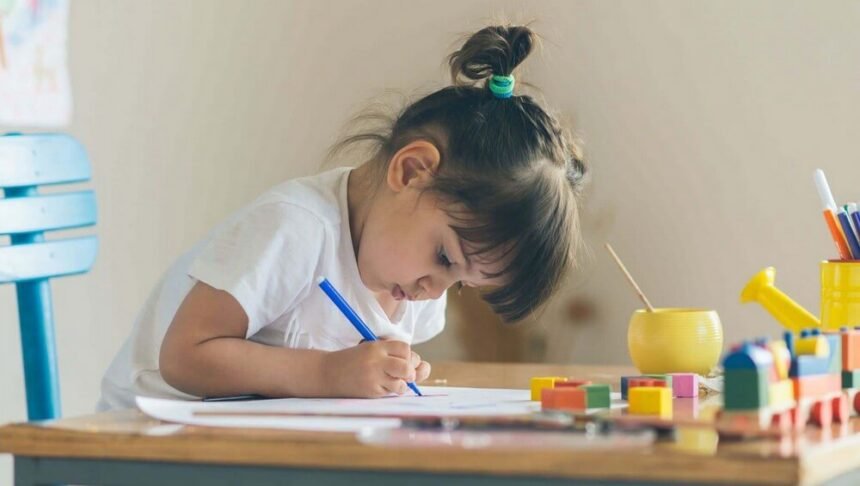Independence is one of the most important goals for every child, especially for children with developmental delays or autism spectrum disorder (ASD). While academic learning plays a crucial role in a child’s growth, life skills the everyday abilities needed to navigate the world are what truly shape self-reliance and confidence. Building independence starts early, and one of the most effective environments to teach these skills is the home.
An in-home setting offers natural learning opportunities that mirror real-world experiences. From brushing teeth to setting the table, every routine can become a valuable teaching moment. When structured and guided properly, home-based learning empowers children to gain practical skills, reduce dependency on caregivers, and improve overall quality of life.
Applied Behavior Analysis (ABA) therapy, often conducted in-home, provides a structured, evidence-based approach for teaching life skills. ABA helps break down complex behaviors into manageable steps, reinforcing each success until mastery is achieved. It is a flexible, individualized approach that meets children where they are and helps them reach their full potential in familiar environments.
The Importance of Life Skills in Child Development
Life skills are the foundation for independence. They go beyond academic knowledge and equip children to function effectively in everyday life. For children with developmental delays or learning challenges, these skills don’t always develop naturally; they must be intentionally taught, practiced, and reinforced.
When children acquire life skills, they gain:
- Increased confidence: Success in daily routines builds a sense of competence and pride.
- Better social integration: Children who can communicate, self-care, and follow routines can participate more fully in school and community activities.
- Reduced frustration: When children can perform tasks independently, they experience fewer emotional outbursts or meltdowns.
- Improved long-term outcomes: Mastery of life skills enhances future academic, vocational, and social success.
Every independent step whether it’s dressing, preparing a snack, or asking for help—is a building block toward autonomy.
Why the In-Home Setting Is Ideal for Learning Life Skills
While classrooms and clinics are excellent for teaching structured lessons, the home offers real-world relevance. It’s the place where routines naturally occur, where skills can be practiced daily, and where learning immediately connects to real life.
Key advantages of in-home learning include:
- Familiar environment: The child feels safe and comfortable, which encourages learning and reduces anxiety.
- Consistent practice opportunities: Skills like grooming, eating, cleaning, and following routines can be reinforced every day.
- Parent participation: Caregivers can observe therapy sessions, learn strategies, and apply them consistently throughout the day.
- Generalization: Skills taught in a familiar environment transfer more easily to other settings, such as school or community activities.
- Personalization: Therapists can tailor goals to the home’s layout, available materials, and the child’s daily routine.
Learning in a natural setting turns ordinary moments into meaningful progress.
Core Life Skills Children Can Learn in an In-Home Setting
1. Personal Care and Hygiene
Self-care is one of the first steps toward independence. Teaching children to complete personal hygiene tasks reduces their reliance on adults and builds confidence.
Skills include:
- Brushing teeth and washing hands
- Bathing or showering with minimal assistance
- Combing hair and dressing appropriately
- Toileting routines and washing hands afterward
ABA therapy uses techniques such as task analysis (breaking a task into small steps) and chaining (teaching each step in sequence). For example, if brushing teeth involves ten small actions, each step is taught and reinforced until the child can complete the full routine independently.
Reinforcement, modeling, and visual schedules also help children understand expectations and remember each step.
- Daily Living and Household Tasks
Children thrive when they can contribute to their environment. Learning to help with chores fosters responsibility and cooperation.
Skills can include:
- Making the bed
- Folding and putting away clothes
- Cleaning up toys or workspace
- Helping set and clear the table
- Sorting laundry or loading the washer
- Wiping surfaces or sweeping
Through consistent practice, these tasks become habitual and automatic. For many children with developmental challenges, mastering these routines brings a strong sense of accomplishment.
Therapists often use visual supports, checklists, or step-by-step cue cards to help children complete multi-step chores without frustration.
- Meal Preparation and Eating Skills
Food-related tasks are natural opportunities to teach independence. Even simple actions like pouring milk, spreading butter, or stirring ingredients promote motor coordination, problem-solving, and patience.
Skills taught might include:
- Setting the table
- Making a simple snack or sandwich
- Using utensils appropriately
- Cleaning up after eating
- Following simple recipes
ABA therapists often incorporate prompting (verbal or physical cues) and fading (gradually removing assistance) to ensure success. The ultimate goal is for the child to prepare and eat meals independently.
In some programs, ABA assessments help determine the child’s readiness for certain tasks. For example, a therapist may assess fine motor skills, safety awareness, and ability to follow directions before introducing tasks like cutting fruit or using a microwave.
- Communication and Social Skills
In-home learning provides natural opportunities to practice communication whether it’s asking for help, greeting a family member, or following directions.
Communication skills include:
- Making requests and responding to questions
- Using appropriate tone and volume
- Taking turns in conversation
- Expressing emotions appropriately
- Understanding nonverbal cues like eye contact and gestures
ABA therapy teaches communication in ways that are functional and meaningful to the child. Therapists might start with mands (requests) and expand to tacts (labeling), intraverbals (responding in conversation), and social scripts (conversation models).
Children who communicate effectively experience less frustration, more cooperation, and stronger social relationships.
- Safety and Awareness Skills
Safety is one of the most vital aspects of independence. Home-based sessions are the perfect place to teach children how to recognize and respond to potential dangers in their environment.
Key skills include:
- Recognizing hot surfaces, sharp objects, or electrical outlets
- Understanding when and how to ask for help
- Learning safe cooking habits
- Following house rules about doors, windows, or appliances
- Recognizing emergency sounds or alarms
These skills may also extend to community safety, such as crossing the street, understanding traffic signals, or identifying trusted adults.
Through role-playing and repetition, children learn how to respond safely and appropriately to different situations.
- Time Management and Routine Following
Developing a sense of structure helps children stay organized and calm. Many children, especially those with autism, thrive on routine. ABA therapy in the home environment supports this by creating visual schedules, timers, and predictable sequences for daily activities.
Children learn to:
- Follow morning and bedtime routines
- Transition smoothly between tasks
- Understand “first-then” concepts
- Use timers or clocks for task management
These skills foster independence and reduce anxiety associated with unexpected changes.
- Emotional Regulation and Self-Management
Emotional self-regulation is essential for independence. Children who can manage frustration, anxiety, and disappointment can participate more fully in daily life.
ABA therapy teaches coping skills such as:
- Deep breathing or relaxation strategies
- Identifying emotions using visuals or emotion charts
- Seeking help appropriately
- Taking breaks when overwhelmed
In the comfort of home, children can practice these strategies in real-time situations—during homework, play, or mealtime making them more effective and meaningful.
Therapists often monitor progress with ABA assessments to determine how well a child applies coping strategies independently and in various contexts.
The Role of Parents and Caregivers in Building Independence
In-home programs succeed best when parents actively participate. Caregivers play a central role in modeling, prompting, and reinforcing life skills throughout the day.
Parents can support progress by:
- Encouraging small steps toward independence rather than perfection
- Creating consistent routines for practice
- Using positive reinforcement instead of punishment
- Offering choices to build decision-making skills
- Being patient and celebrating each success
The partnership between caregivers and therapists ensures that learning continues long after therapy sessions end. Over time, children internalize these lessons and begin applying them naturally.
Teaching Techniques That Foster Independence
ABA therapy offers a wide range of techniques designed to promote independence. These methods can be adapted to each child’s abilities and learning pace.
1. Task Analysis
Every complex skill (like brushing teeth or making a sandwich) is broken down into small, teachable steps. Each step is mastered before moving to the next, ensuring success without overwhelming the child.
2. Prompting and Fading
Therapists use verbal, gestural, or physical prompts to guide behavior, then gradually reduce support to encourage independent performance.
3. Chaining
In forward chaining, the child learns the first step and builds up; in backward chaining, they complete the final step first and work backward. Both methods promote mastery through repetition and reinforcement.
4. Positive Reinforcement
Rewarding success with praise, tokens, or preferred items strengthens motivation and helps children associate effort with positive outcomes.
5. Modeling and Role-Play
Therapists and caregivers model desired behaviors and allow the child to imitate and practice. Role-playing helps children prepare for real-world scenarios, such as greeting a visitor or preparing a snack.
6. Natural Environment Teaching (NET)
Rather than isolated drills, NET uses daily routines like dressing, cooking, or cleaning as opportunities for organic learning. Skills are taught in meaningful, familiar contexts, increasing retention and generalization.
Measuring Progress Through ABA Assessments
Progress toward independence is measured through structured observation and data collection. Therapists rely on ABA assessments to identify starting points, set measurable goals, and evaluate growth over time.
These assessments track:
- Mastery of specific life skills
- Level of prompting required
- Consistency and generalization of learned behaviors
- Changes in communication or social interaction
By analyzing data, therapists can adapt teaching strategies, introduce new goals, and celebrate progress in a concrete, measurable way. Regular reassessment ensures that therapy stays aligned with the child’s evolving needs.
Overcoming Challenges in Teaching Independence
Building independence can come with obstacles, resistance to change, limited motivation, or frustration when tasks feel difficult. ABA therapy addresses these barriers through structured support and encouragement.
Some strategies include:
- Breaking tasks into smaller, achievable steps
- Using highly motivating reinforcers
- Creating visual supports for clarity
- Ensuring consistency among caregivers and therapists
- Encouraging self-advocacy so the child can ask for help when needed
With patience, consistency, and positive reinforcement, even small victories lead to long-term independence.
The Long-Term Impact of Building Independence
Teaching life skills is not just about completing daily tasks, it’s about shaping a capable, confident individual who can thrive in various environments. The long-term benefits of independent living skills include:
- Greater self-esteem and sense of accomplishment
- Reduced caregiver burden
- Enhanced readiness for school, work, and community participation
- Increased safety and adaptability
- A more meaningful, self-directed life
When children master life skills at home, they develop a foundation for lifelong success. Each new skill learned strengthens their belief in their own abilities.
Conclusion
Building independence is one of the greatest gifts a parent or therapist can give a child. Through in-home ABA therapy, children can learn essential life skills in a natural, supportive environment, skills that empower them to live more confidently, communicate effectively, and contribute meaningfully to daily life.
By using structured methods, consistent reinforcement, and individualized ABA assessments, therapists and caregivers can guide children step-by-step toward autonomy. Over time, brushing teeth, making a snack, or asking for help becomes more than a task; it becomes an expression of growth, confidence, and freedom.
Independence isn’t achieved overnight, but with patience, persistence, and love, every child can take meaningful steps toward it. And each small victory at home builds the foundation for a lifetime of success.














